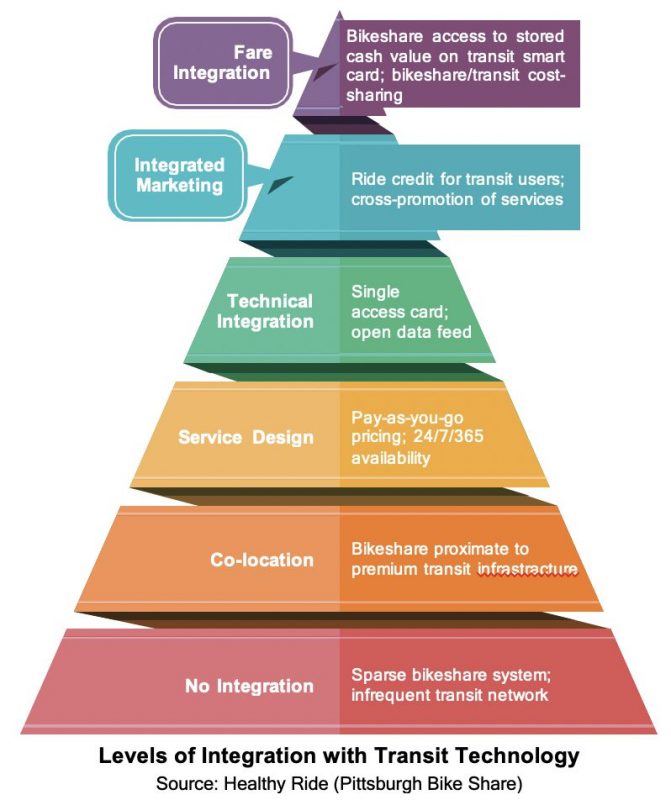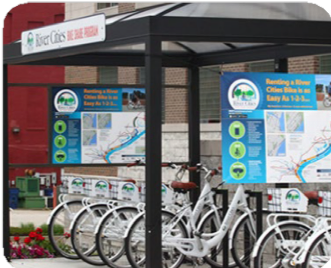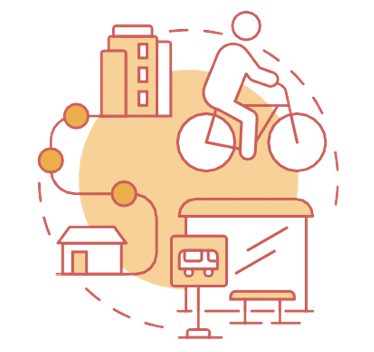Micromobility is a range of small, lightweight vehicles that operate at low speeds and are operated directly by the user. Micromobility vehicles can include shared bicycles, e-bikes, and electric scooters, and can include systems with docks or “dockless” arrangements. These systems can complement public transportation by filling in the “last-mile” gap between a transit station and the user’s origin or destination, or providing travel options in areas with inadequate public transportation.
There were over 100 bike share systems and another 100 scooter share systems operating in the United States as of 2019. Operational considerations for launching and integrating these systems with transit include the following:
- Funding: Like transit, micromobility requires ongoing capital and operating subsidy.
- Dockless or docked system: The bikes and scooters must go somewhere.
- Existing transit tech integrations: Fare payment integration is the gold standard if possible. (See image to right)
- Partnerships: Municipalities, local institutions (e.g., hospitals), transit agencies, federal partners, human service organizations, and micromobility operators should all be involved.
- Technology level: Bike share does not have to use mobile apps or smart docking stations to be a useful complement to transit.

Small-Town Micromobility
While most of the attention in micromobility goes to bigger cities like New York and Los Angeles, the National Center for Mobility Management notes that smaller communities have shown bike share can serve as an effective tool to improve mobility almost anywhere in the country.
- App-Based Rentals at set bike parking locations is a common micromobility option. Users can download an app, set up an account, and then enter the ID number of the bicycle they wish to rent. This automatically unlocks the bike, and the user is charged based on the length of the rental.
- The Bike Library model is a low-cost option that has a fleet of bicycles available for the public to check out from Town Hall, the local library, or other office open to the public. People without credit cards or smart phones can use this system, and, if design properly, can complement transit service and/or fill in gaps in places or times of the day when transit doesn’t run.
- Long-term rentals are another low-capital option that can be used when there are institutional partners able to manage the fleet and bike repairs. Universities, hospitals, and/or municipal governments can work with local bike shops to offer longer- term (weekly, monthly, or semester-long) rentals.
River Cities Bike Share
River Cities Bike Share program is an app-based bikeshare program in southeastern Indiana that allows users car-free mobility an area without transit.

Allen County Bike Share
Allen County, Kansas is an area with limited public transportation services in rural southeast Kansas. Through this Bike Library-style program, users can check out bikes free of charge from select locations.
Vallocycle
In partnership with the University of Montevallo in central Alabama, ValloCycle allows long-term rentals for students and residents alike. This provides mobility options in a community with minimal public transportation services.





